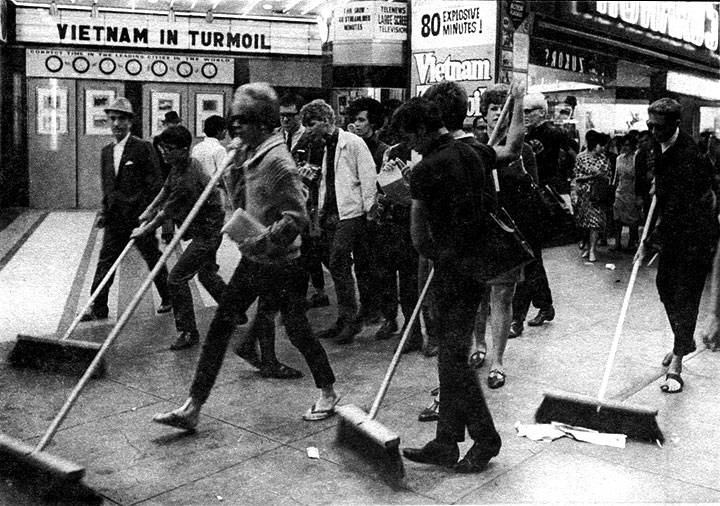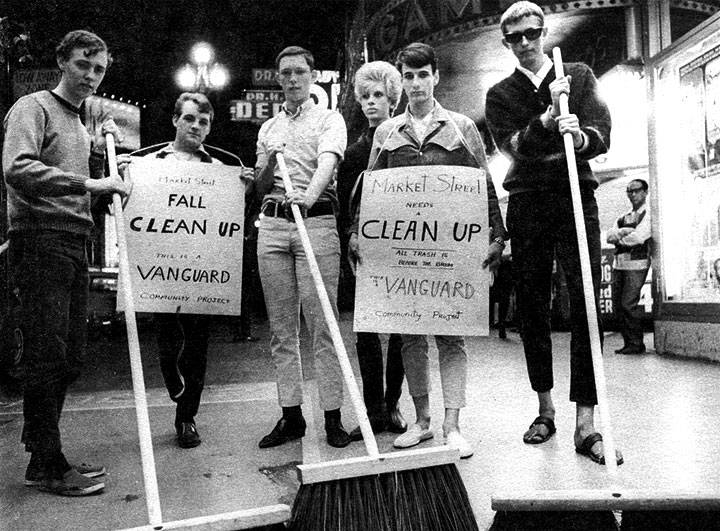1966 Vanguard Sweep
Unfinished History
On a summer night in 1966, a group of gay and transgendered youth gathered on the streets of San Francisco’s low-income Tenderloin district.
Tenderloin youth protest police sweeps with a tongue-in-cheek "street sweep" protest. 1966.
Photo: GLBT Historical Society
From the Press Release: Tonight a "clean sweep" will be made on Market Street, not by the POLICE, but by the street people who are often the object of police harassment. The drug addicts, pillheads, teenage hustlers, lesbians, and homosexuals who make San Francisco's "Meat Rack" their home, are tired of living in the midst of the filth thrown out onto the sidewalks and into the streets by nearby businessmen. . . This VANGUARD demonstration indicates the willingness of society's outcasts to work openly for an improvement in their own social-economic power. WE HAVE HEARD TOO MUCH ABOUT "WHITE POWER" and "BLACK POWER" SO GET READY TO HEAR ABOUT "STREET POWER."
The city was then a national destination for GLBT youth, many of them disowned by their families. Too young to find legitimate work, they banded together for safety in a neighborhood known for its low-rent apartments, cheap hamburger stands, and gay bars plagued by police raids. Many succumbed to drug abuse and violent deaths.
Audio interview with participants by Joey Plaster.
This particular night was different. Three years before New York City’s Stonewall riots, youth held signs demanding rights. With supportive clergy at their side, they chanted and marched on the street. TV and radio reporters recorded as they spoke out against discrimination. They called themselves Vanguard. They are now considered the first gay liberation organization in the country.
Vanguard posing after the sweep, June 1966.
Photo: GLBT Historical Society
From Vanguard Magazine, Vol. 1, No. 2, Oct. 1966. Vanguard was founded by Tenderloin youth in 1966 with the help of urban ministers, anti-poverty organizers, and homophile activists.
This material is adapted with permission from the GLBT History website.



